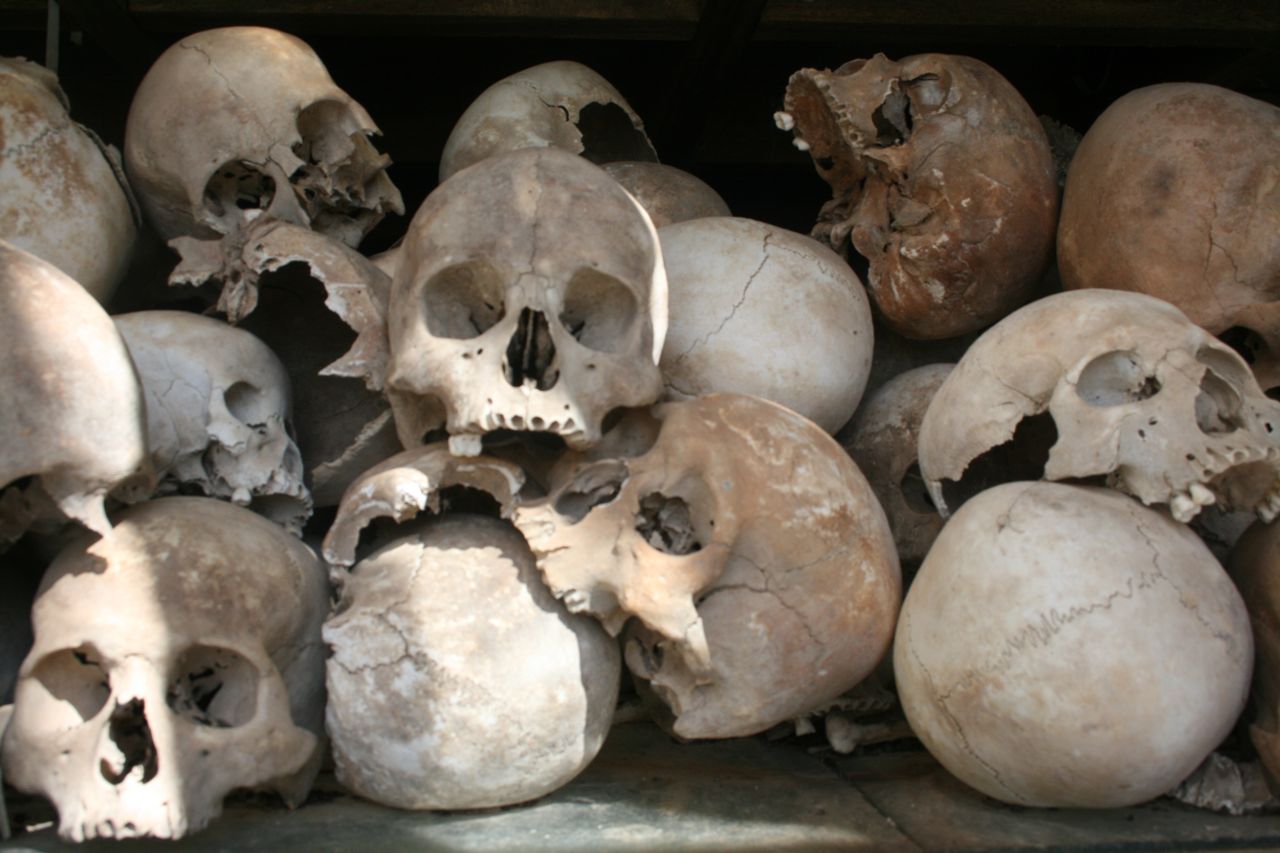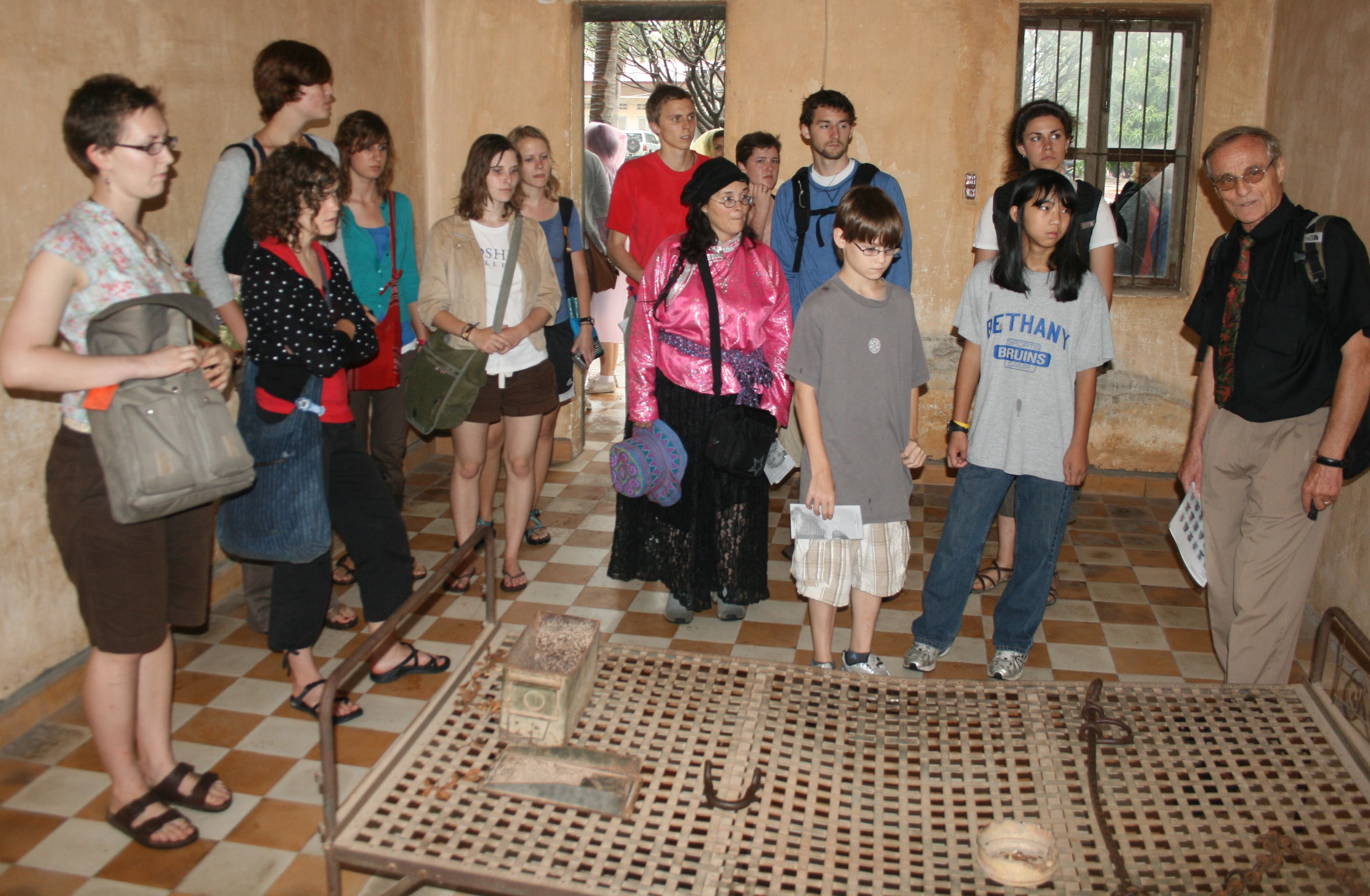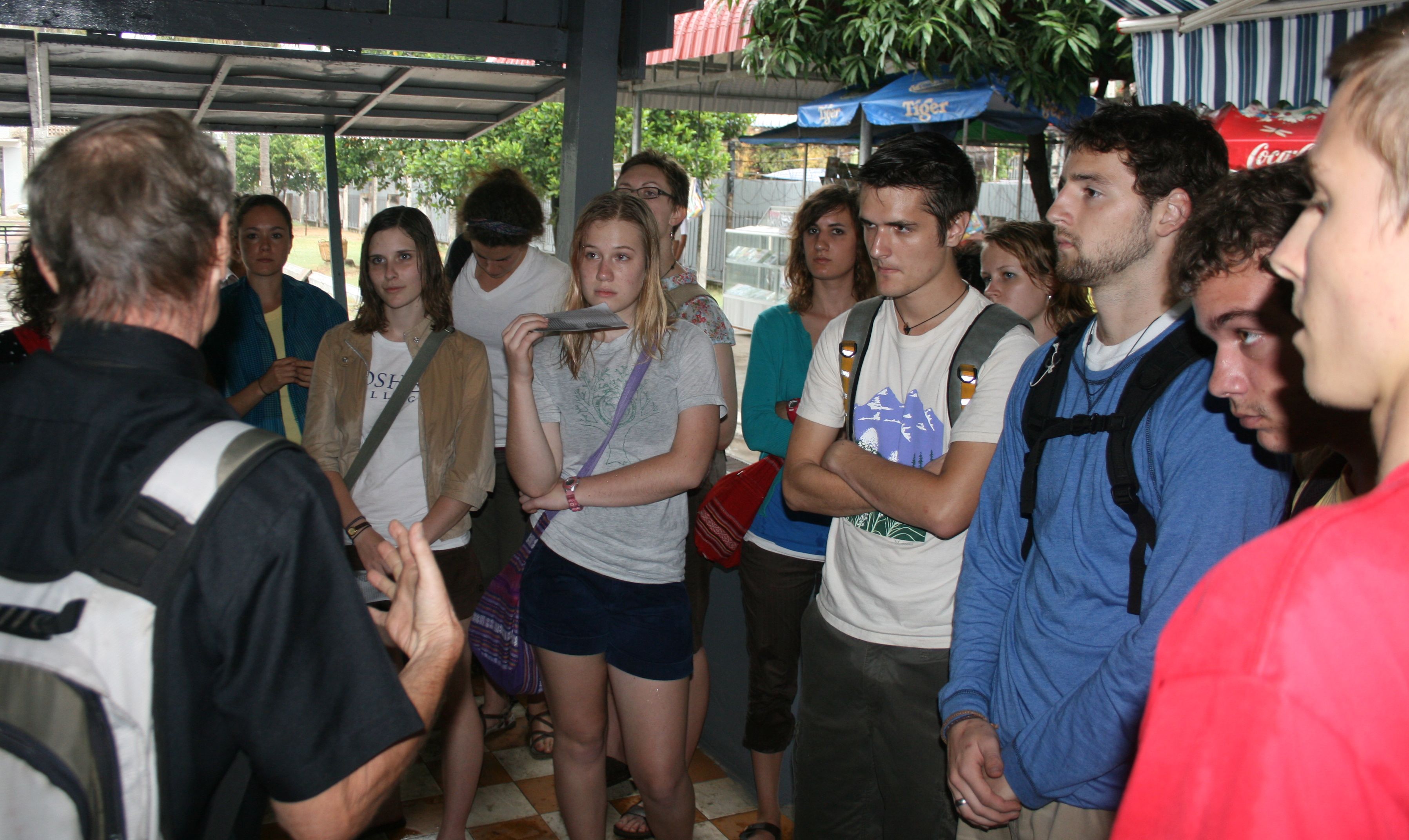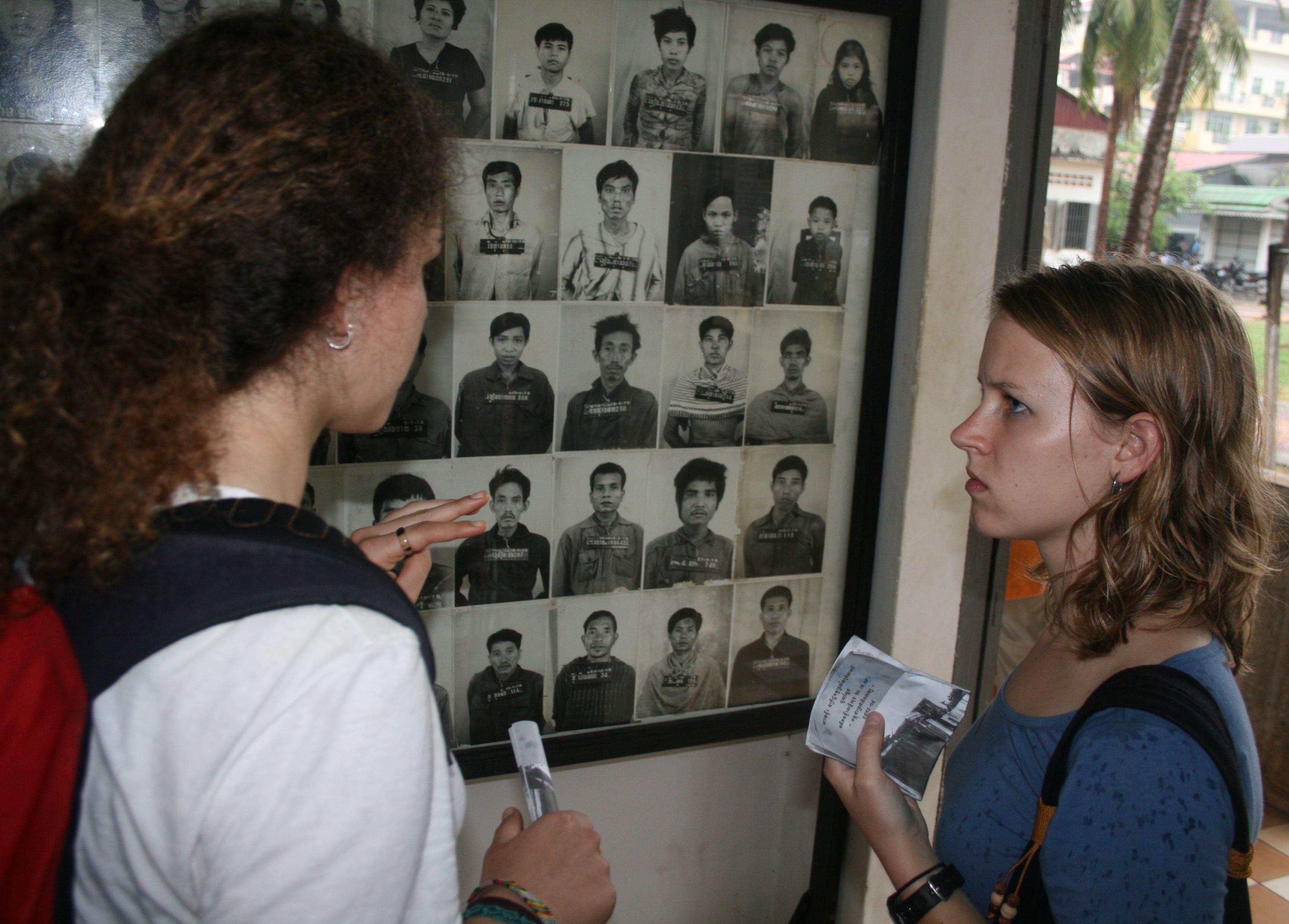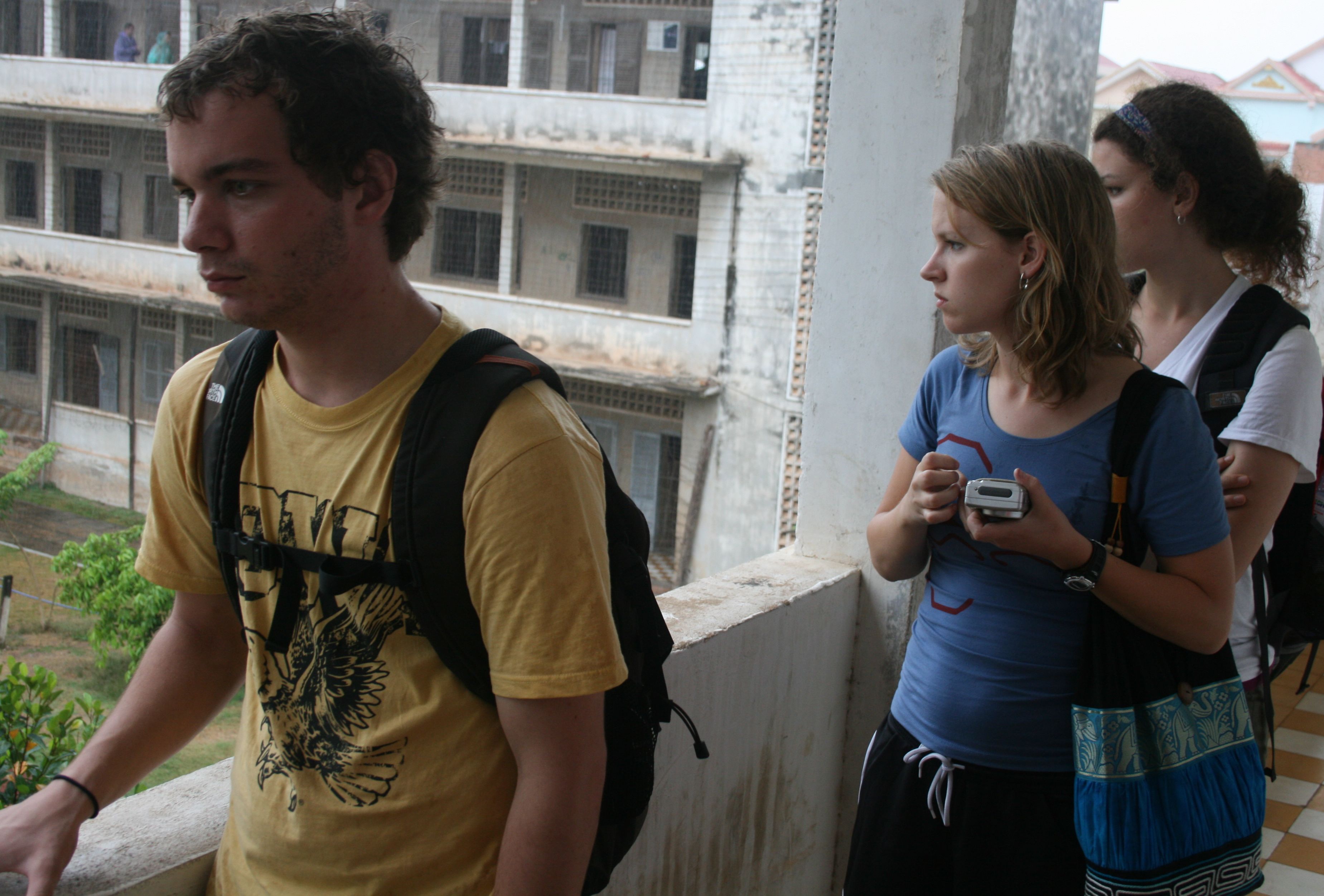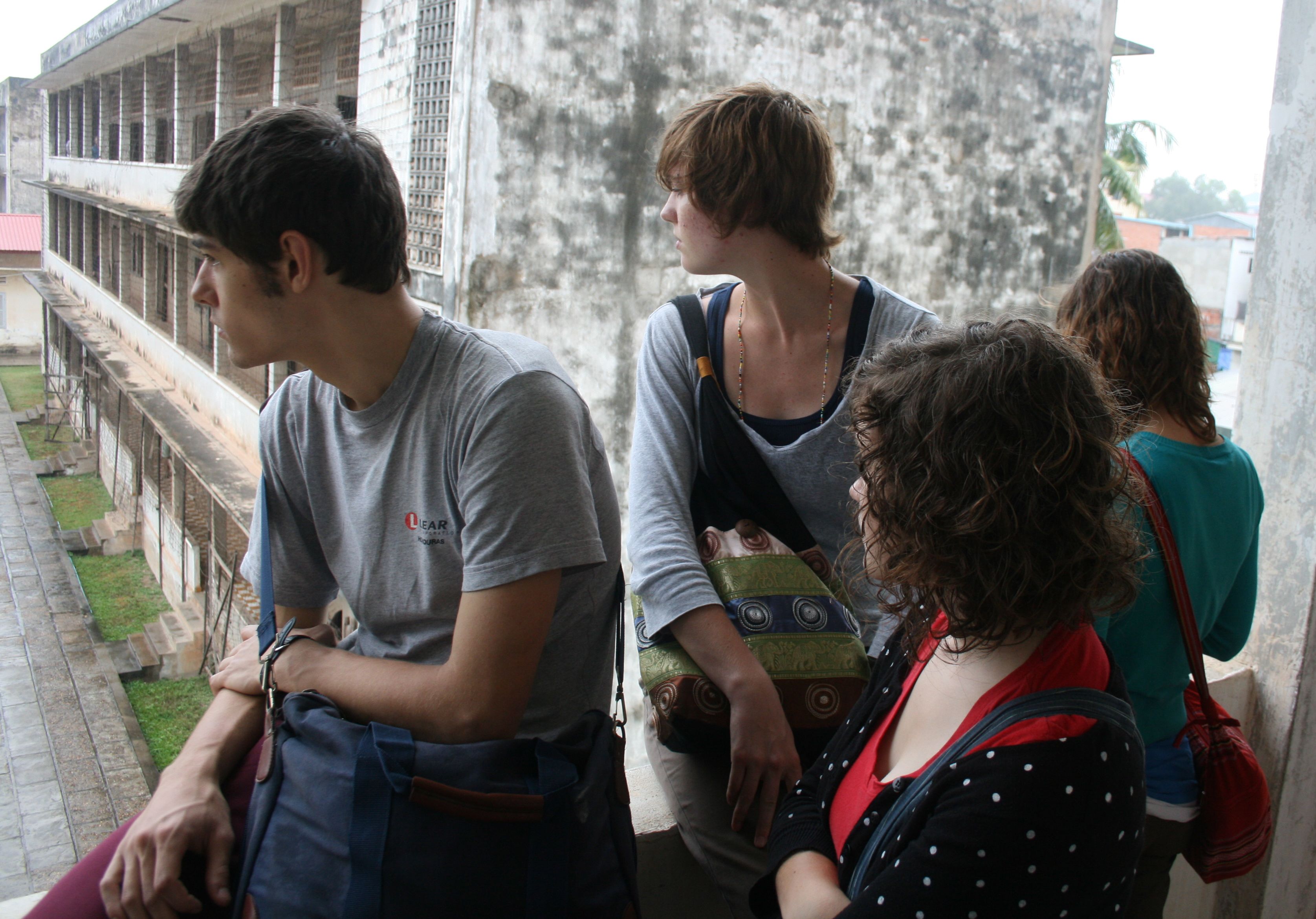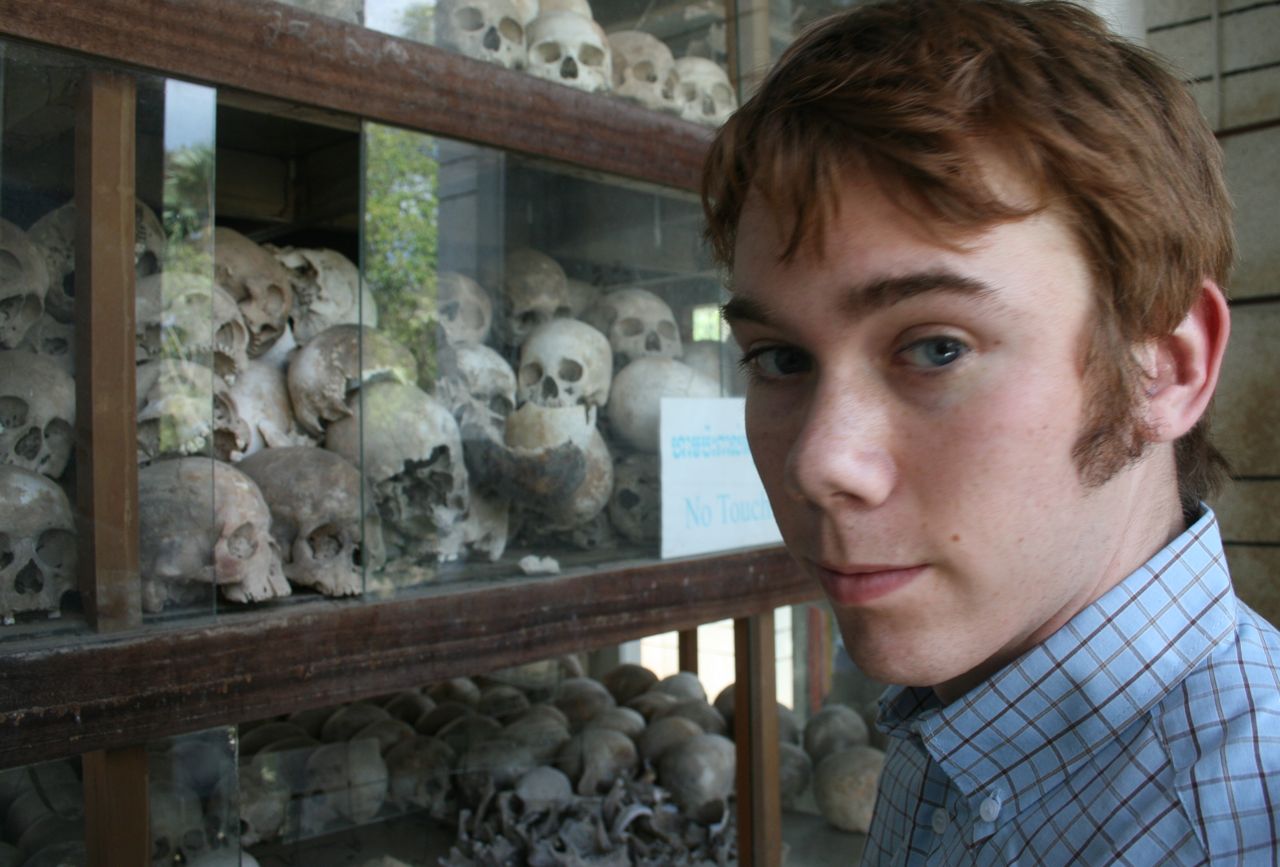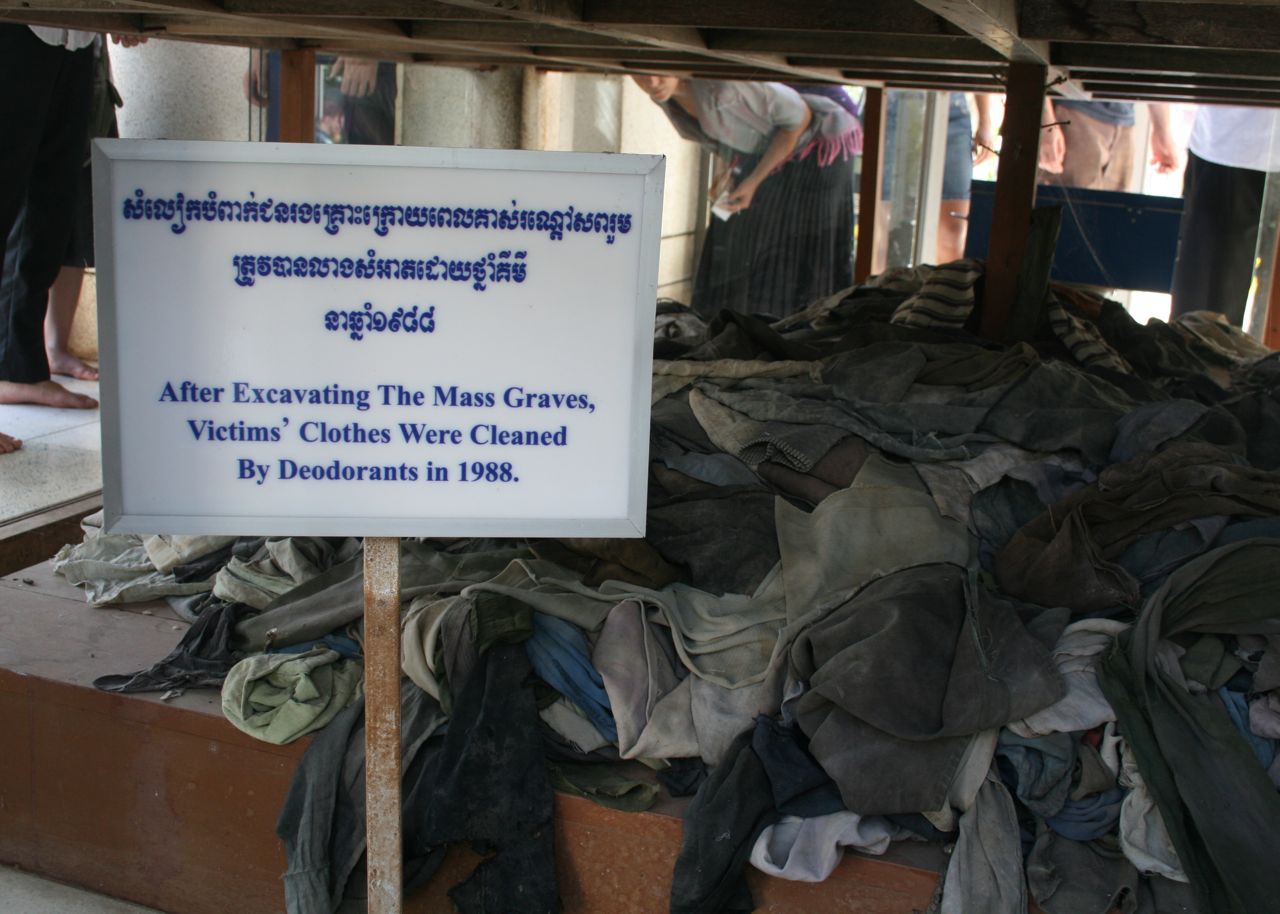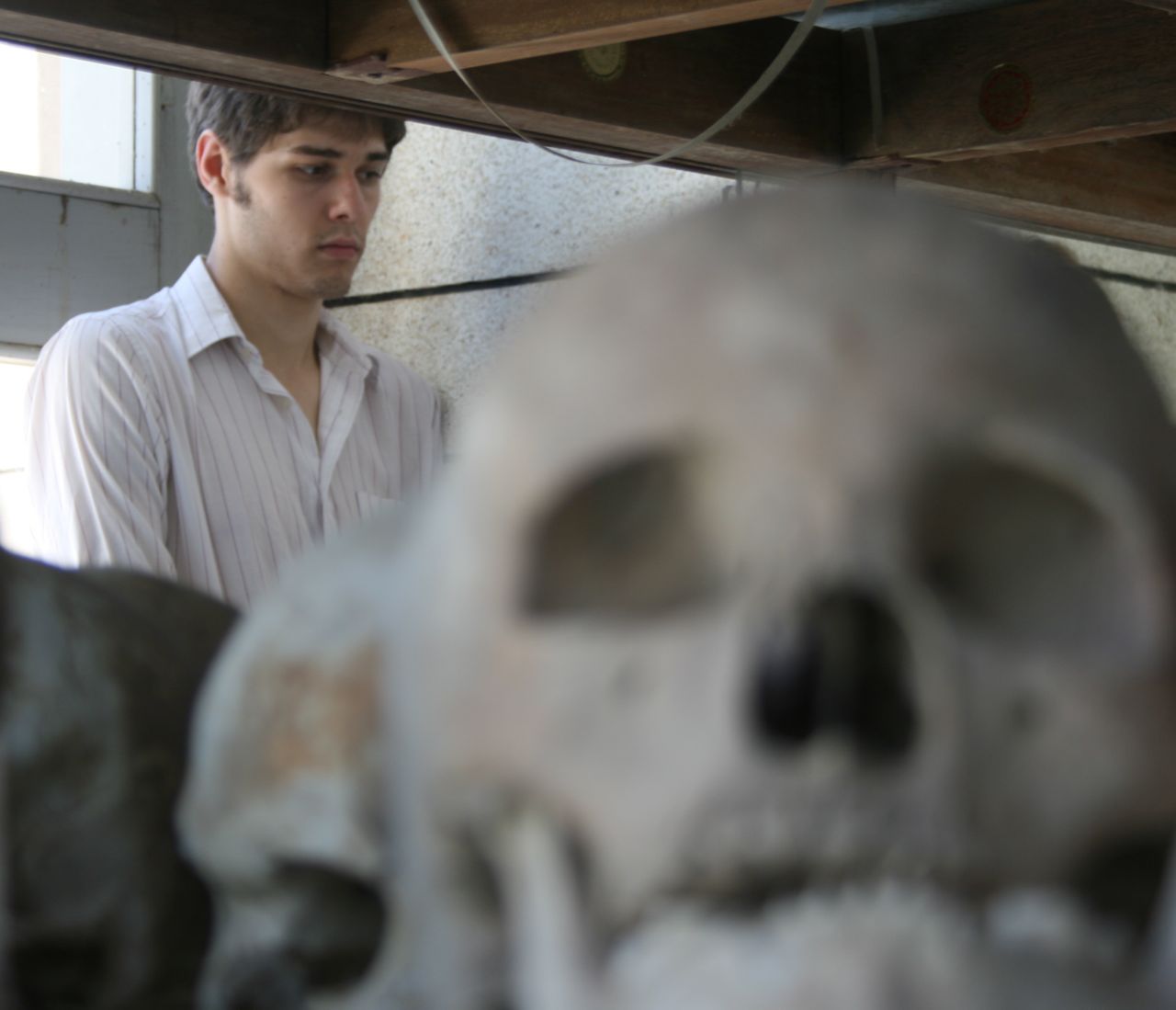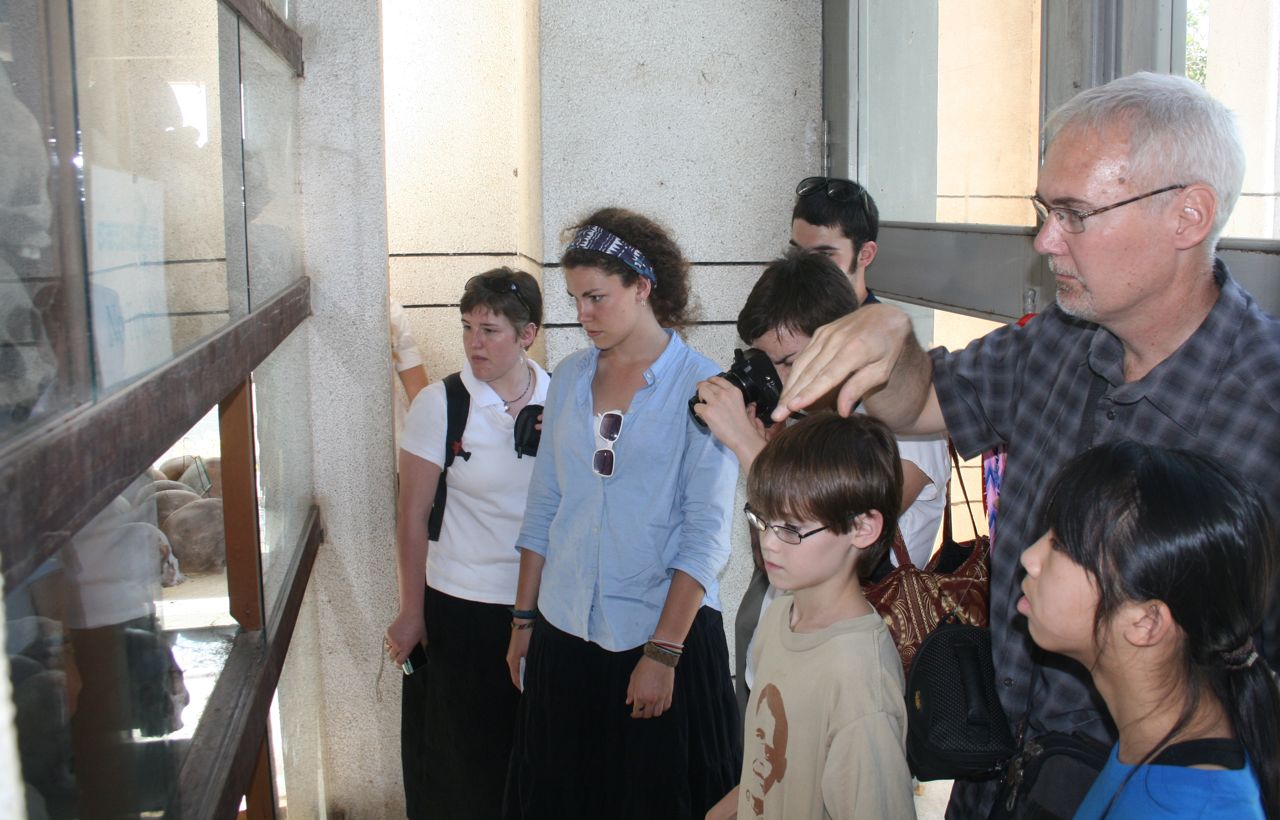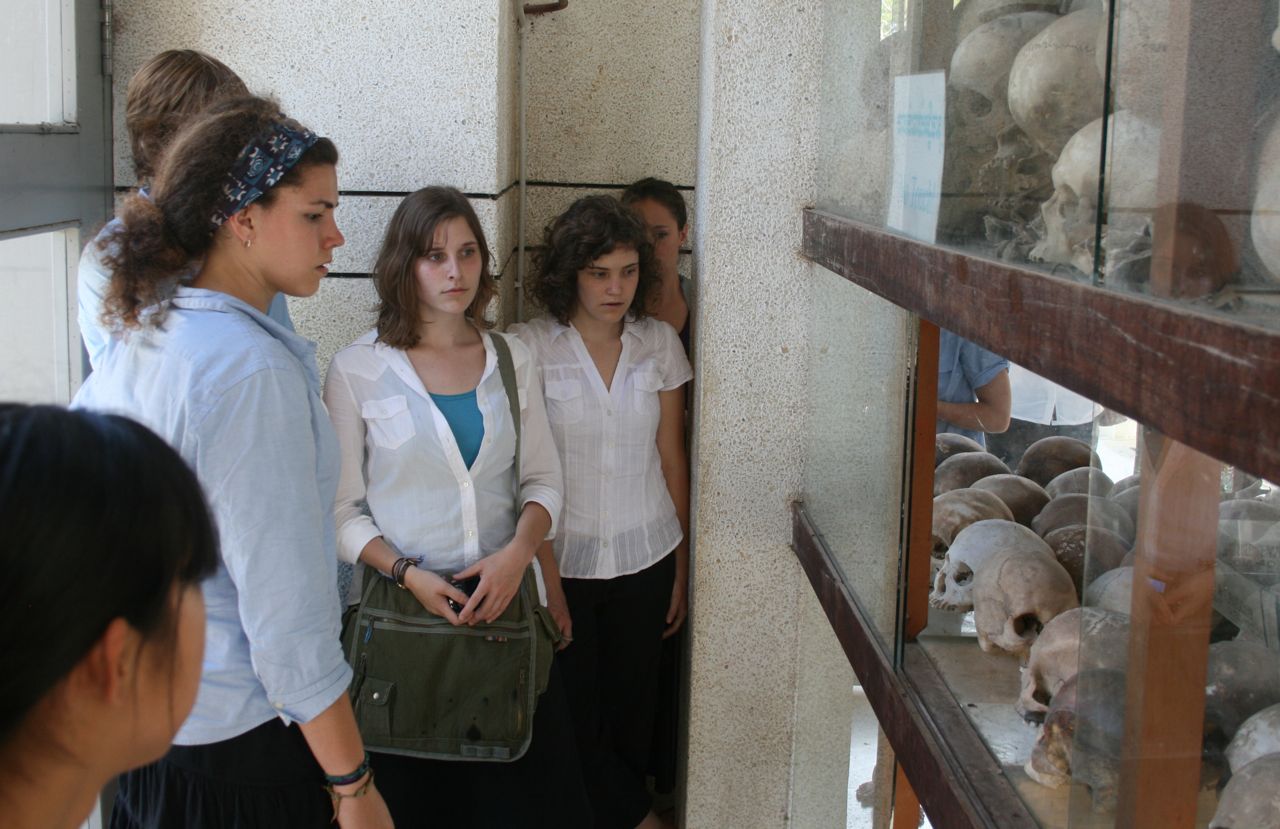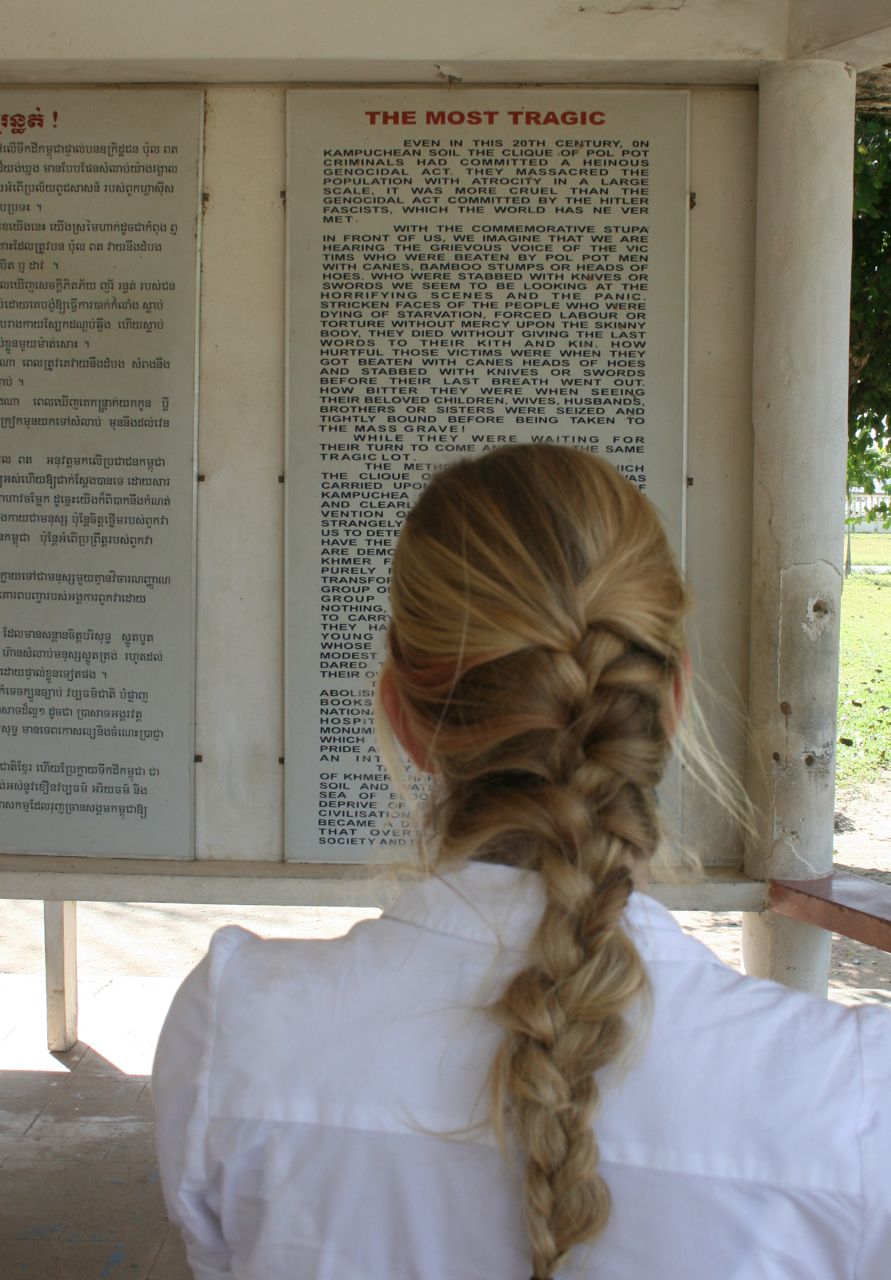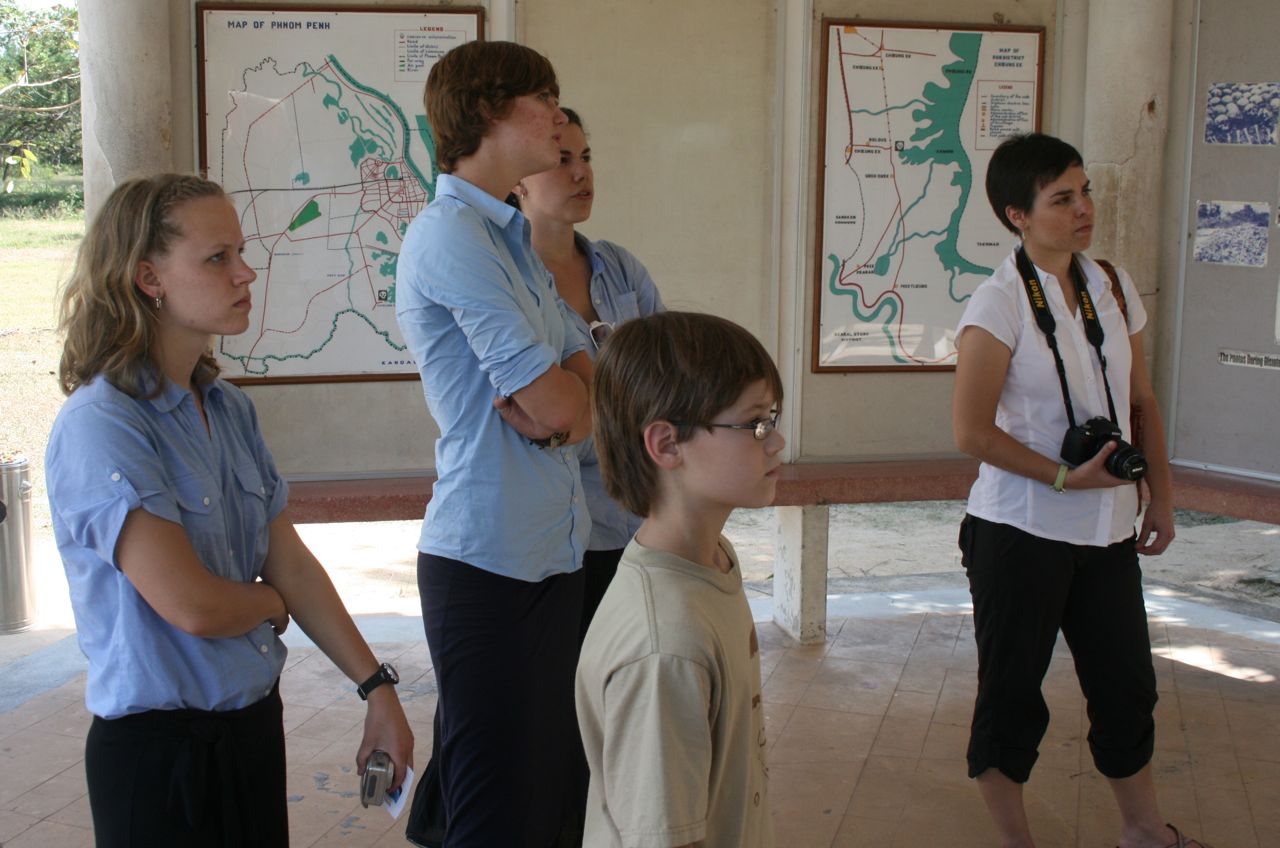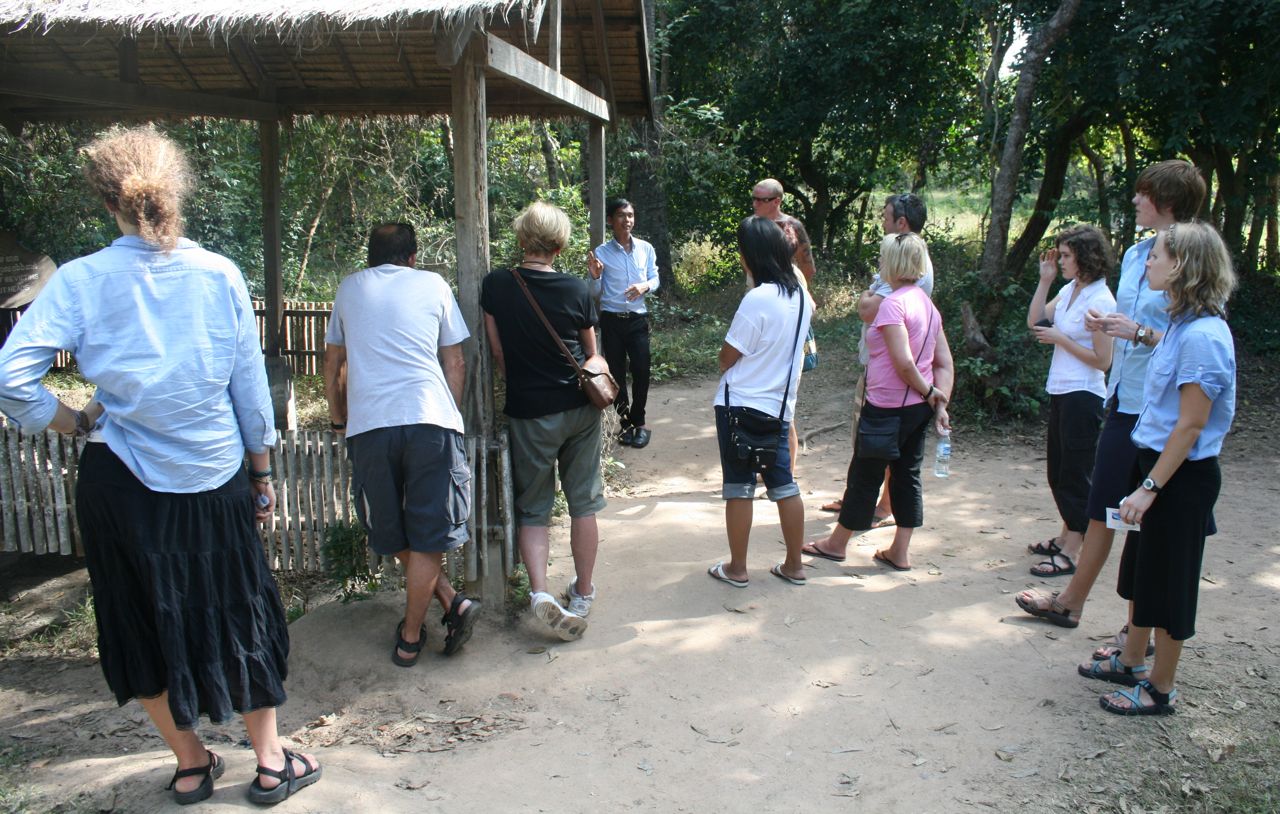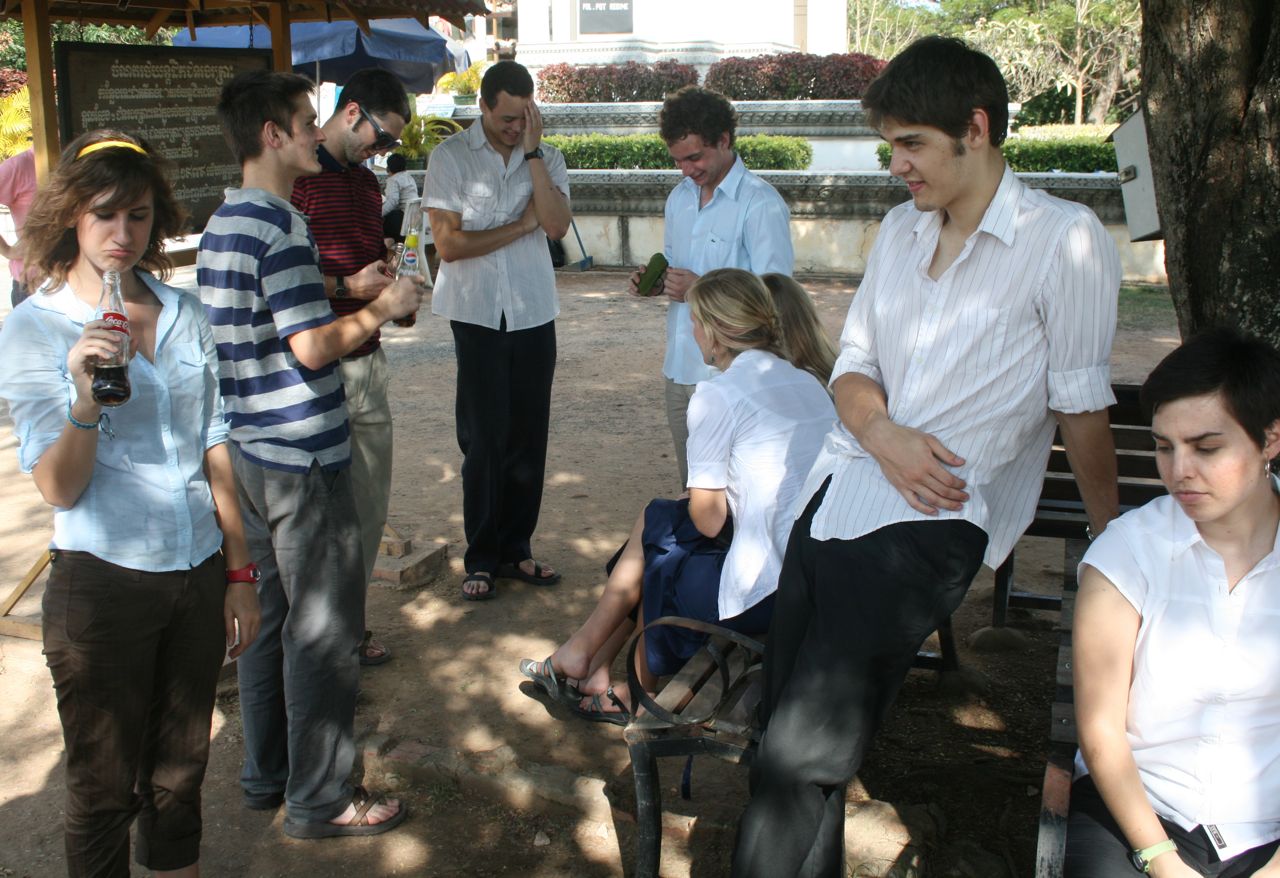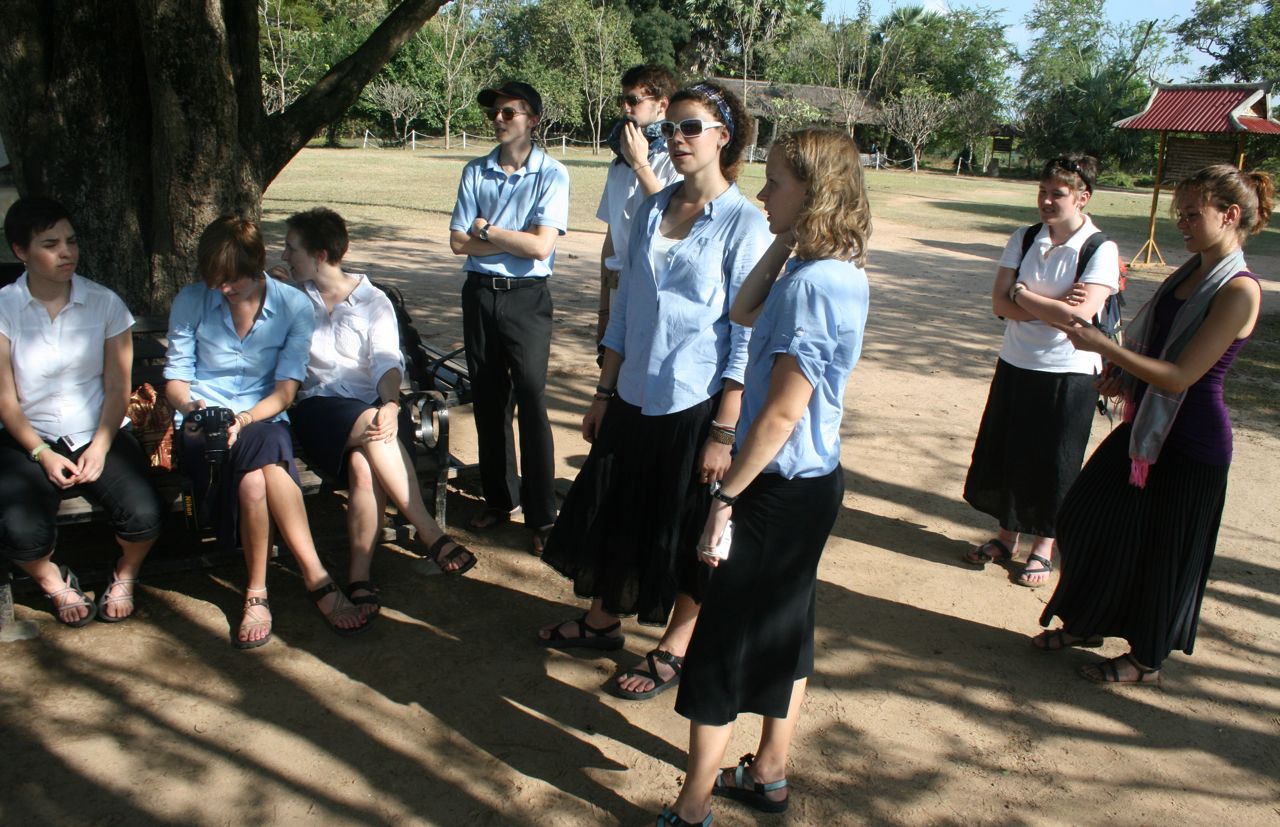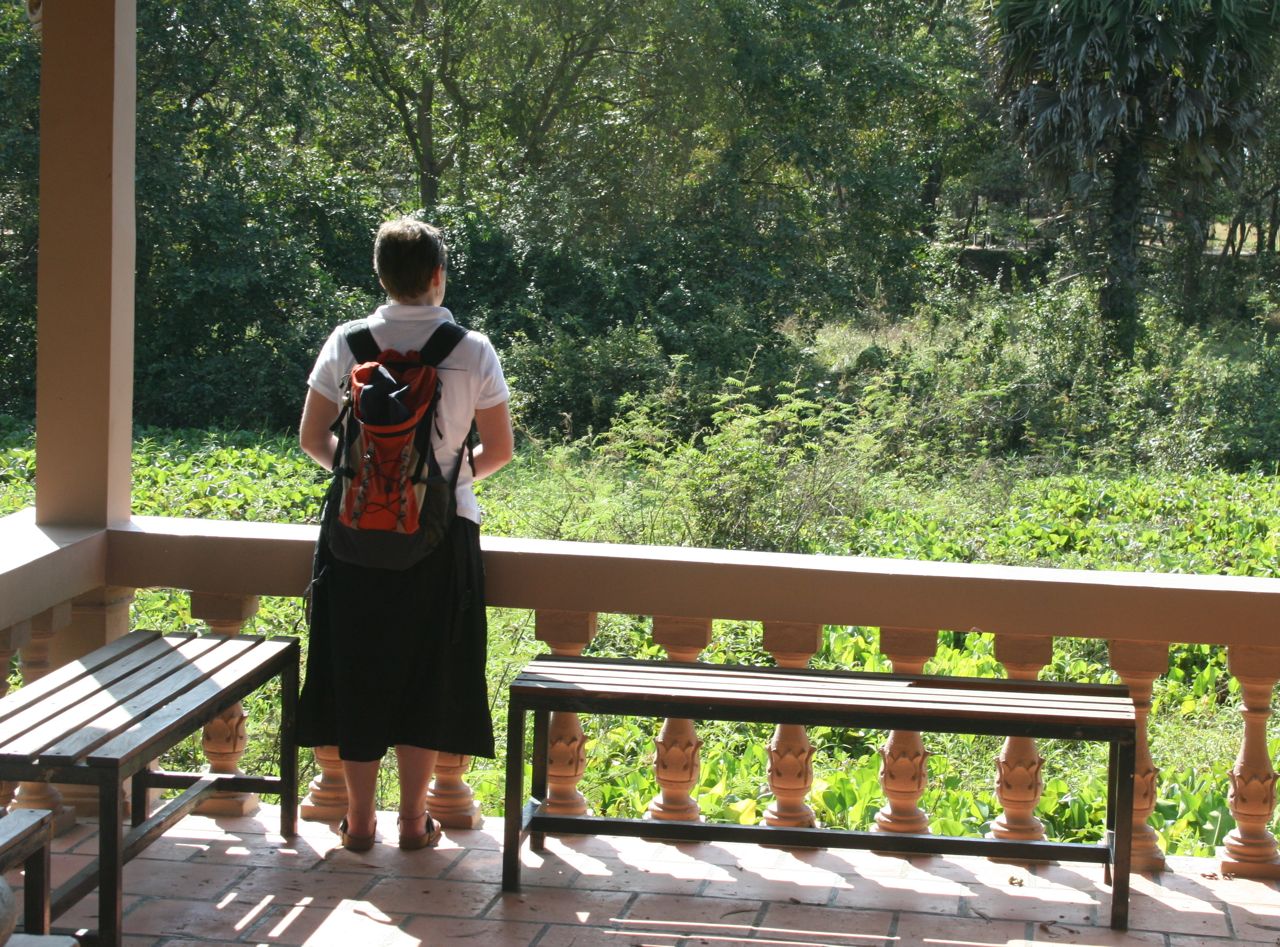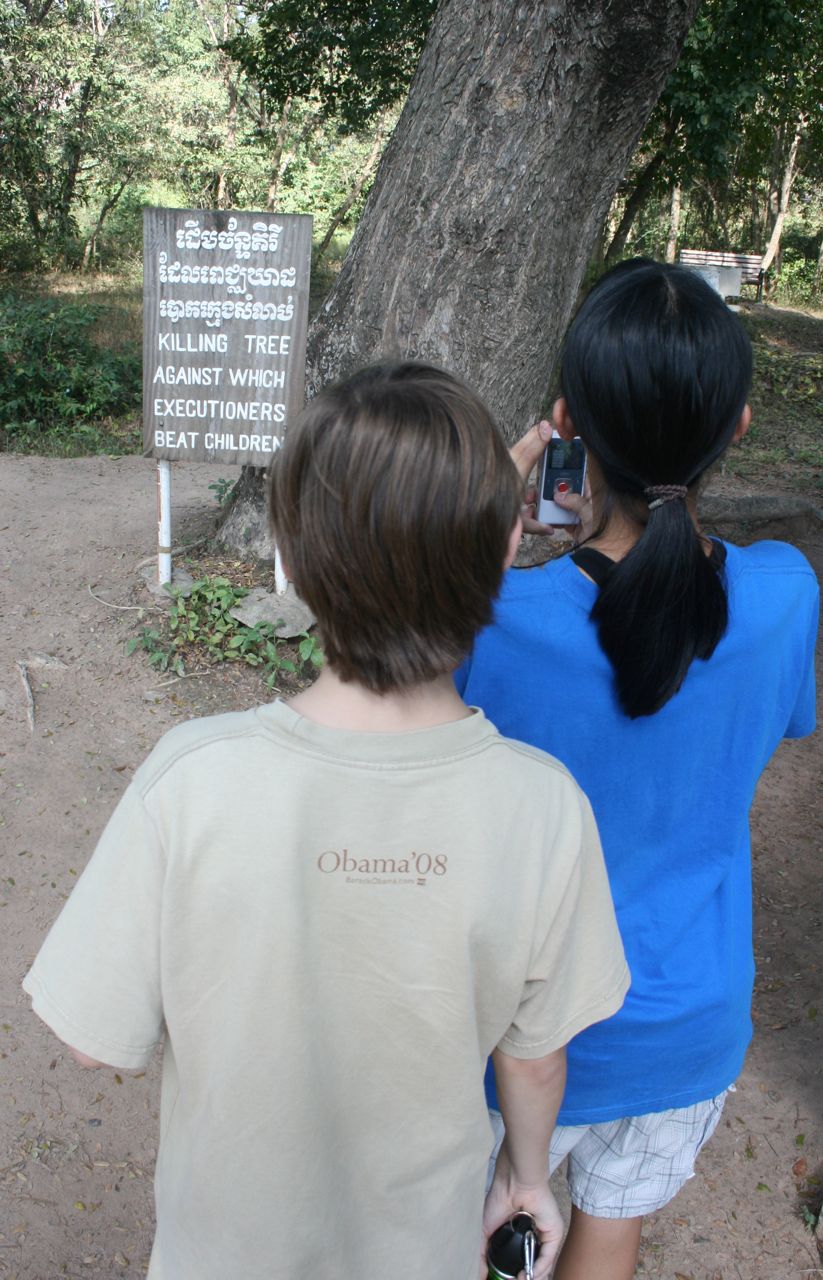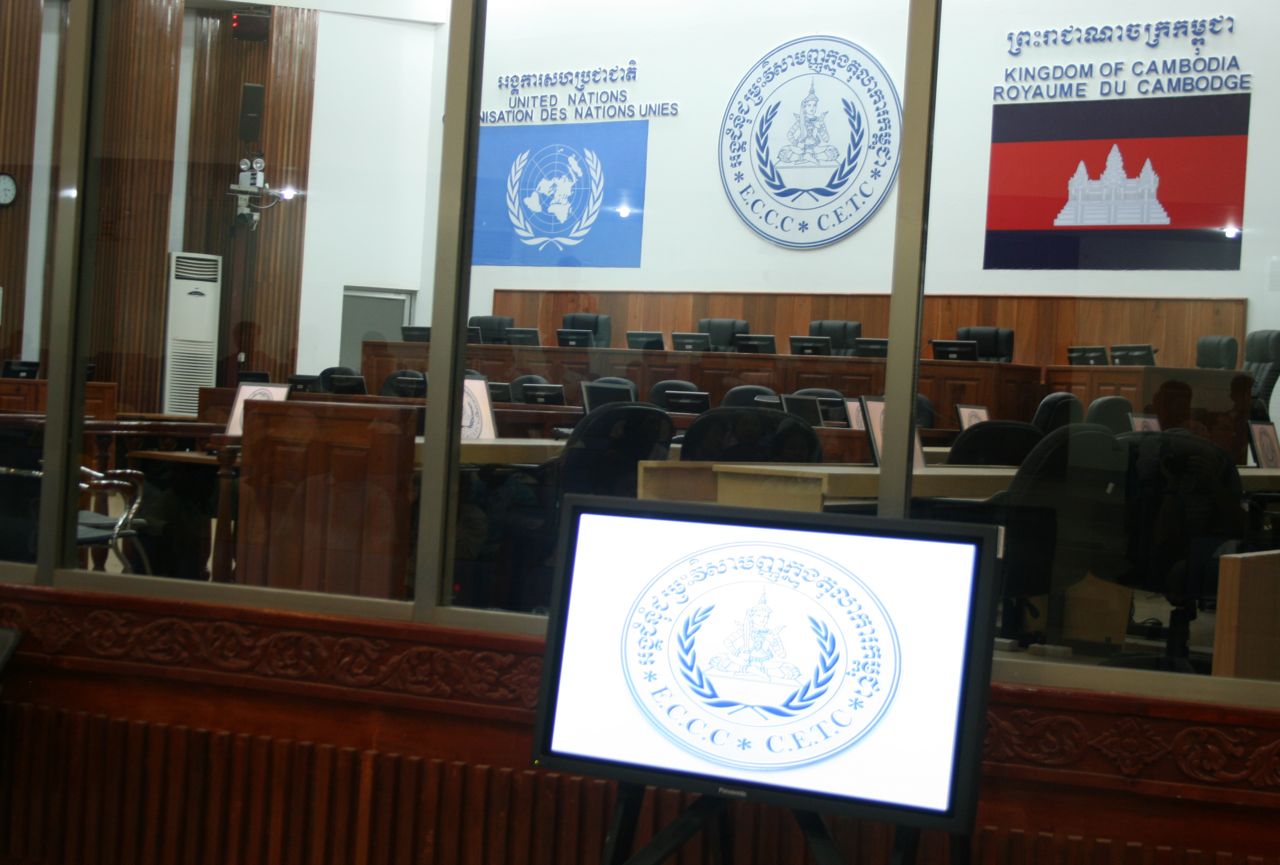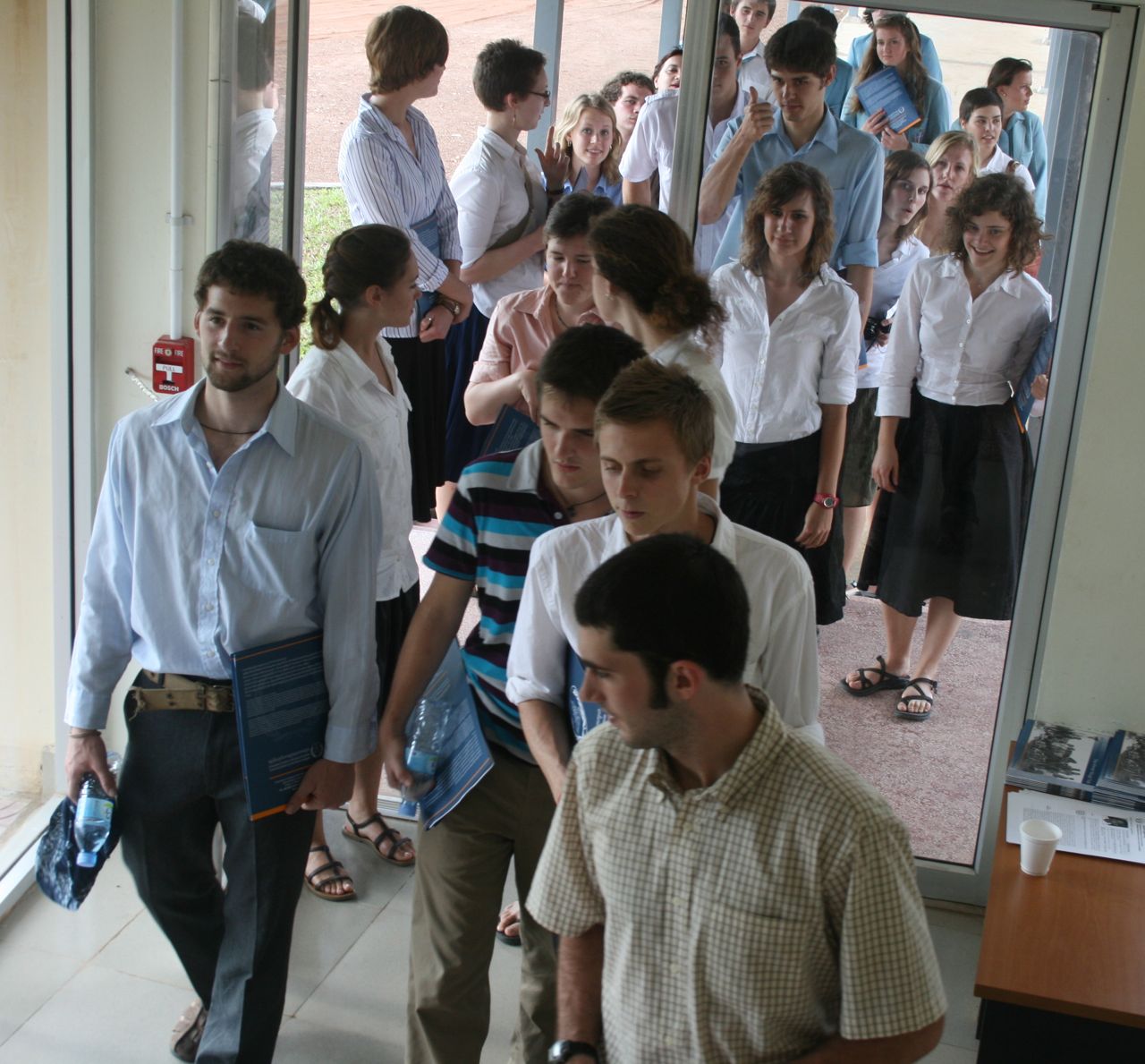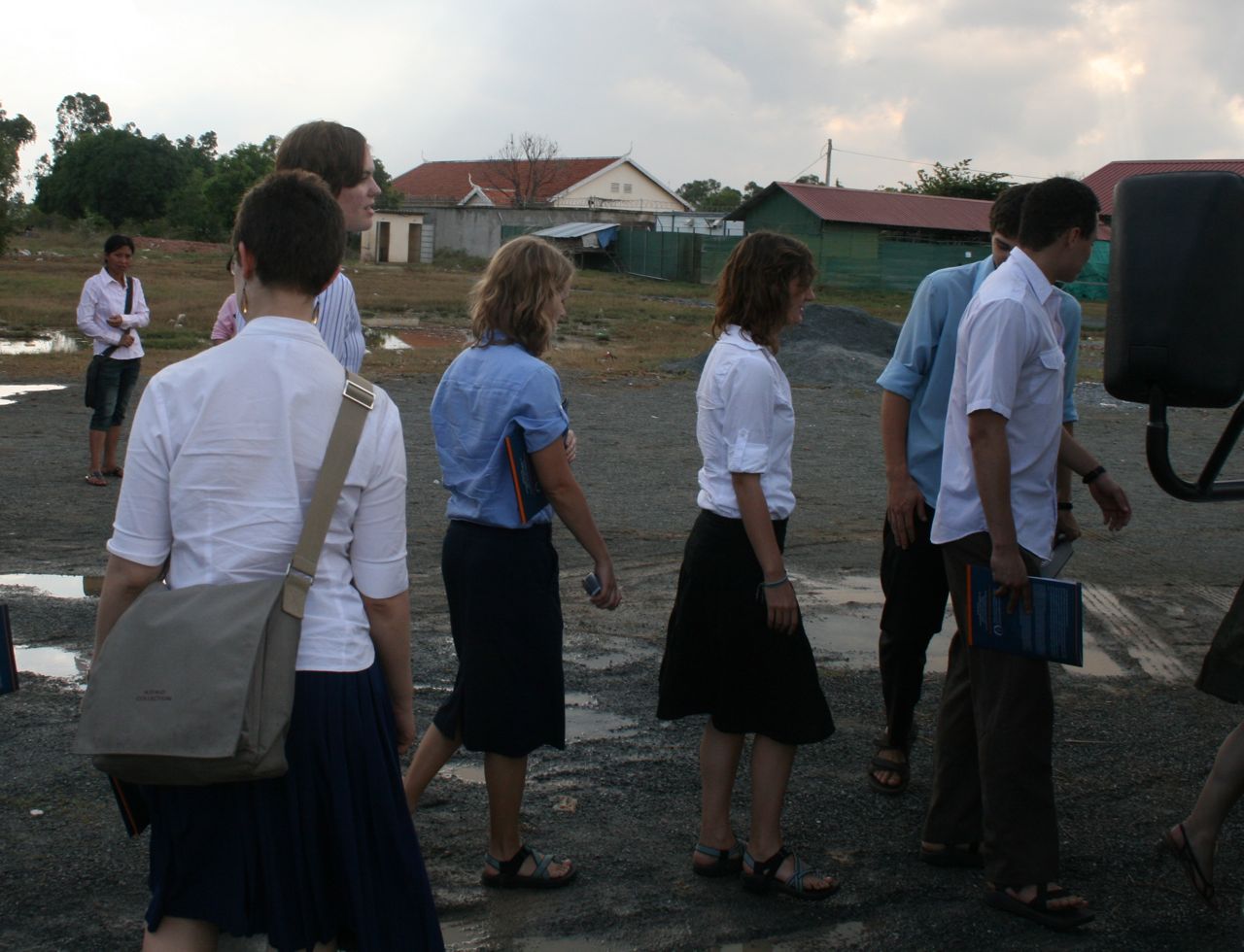Khmer Rouge Week
This is the fifth of five catch-up blogs, and the last blog we will post until next week. We leave for Siem Reap and Angkor Wat Thursday morning, so early next week we’ll report on that major field trip. Between January 20 and January 27 we celebrated three birthdays — Julian and Phil’s 21st birthdays, which were a day apart, and Austin’s 20th birthday. We also spent much of that time period focusing on the horrific Khmer Rouge period in Cambodia.
Cambodia was a French colony from the late 19th century through 1953, and then became an independent nation with a French-influenced king, Norodom Sihanouk. With the help of U.S. forces, Sihanouk was deposed in 1970 and Lon Nol, a puppet president under U.S. influence, was put in place. The U.S. was quite interested in the region because of its faltering war in Vietnam (known here as the American War). Without ever declaring war, for many years throughout the late 1960s and early 1970s the U.S. dropped thousands of tons of bombs on Cambodia’s eastern border, which is adjacent to Vietnam.The U.S. bombs killed between 50,000 and 200,000 Cambodian villagers, and decimated agricultural production during the early 1970’s.
Under the weakened Cambodian government, a rural-based, communist force of young people — plus a few educated leaders such as Pol Pot — developed increasing power during the Lon Nol years, incrementally taking over the Cambodian countryside. Finally, on April 17, 1975, Khmer Rouge forces took over Phnom Penh, declared Year Zero (everything starting anew), and forced everyone out of the city(ies) and into the countryside. All educated people — those who wore glasses so they could read, those who could speak another language, those who had been in government, military, or police services — were killed on the spot. Others were driven out to rural areas to do hard labor, building dams, planting rice, and attempting to develop irrigation systems.
The numbers vary dramatically, but somewhere between 1.7 million Cambodians and as many as a third of all Cambodians at the time were killed or died during that tragic three-year, 20-month, eight-day regime in Cambodia. On January 7, 1979, Vietnamese forces entered Cambodia and liberated (or some say invaded) the country, taking over power for the next decade. The U.S. and the U.N., unhappy with the Vietnamese and still smarting from the war in Vietnam, continued to support the Khmer Rouge, allowing only Khmer Rouge representatives to have a seat at the U.N. table for the next decade — even after they knew of the atrocities. It’s a tragic past that still affects every person who was alive then, as well as their children and grandchildren. In many ways Cambodia is a culture with collective Post-Traumatic Stress Disorder. A decade ago about a third of the population was clinically diagnosed as PTSD.
One of students’ journal assignments was to interview their parents or grandparents about where they were during the Khmer Rouge stories. The stories were powerful, often tearful, as host families recounted their tales of how many siblings, parents, or cousins had died during the Khmer Rouge period.
We also visited Tuol Sleng or S-21, the prison where between 12,000 and 19,000 Cambodians were tortured before they were put to death. Tuol Sleng was only one of scores of similar interrogation sites scattered around the country. From Tuol Sleng, prisoners were taken to Choeng Ek, or the Killing Fields, where they were summarily killed, often hit on the back of the head with a shovel or hammer, and then disposed of in mass graves. At Choeng Ek — one of about 196 mass grave sites scattered around the country — we walked around the edges of the excavated holes, seeing bits of clothing and even bones still emerging from the dirt path. We also saw the stupa where layers of skulls — perhaps 5,000 or more — are kept after they were taken from the ground.
Another part of the week was hearing from a representative from the Document Center-Cambodia, who said Cambodia had been the most developed Southeast Asian nation in the 1960s, prior to the Lon Nol and Khmer Rouge periods. In addition, we visited the grounds at the Extraordinary Chambers of the Courts of Cambodia, the Cambodian and international court that belatedly is trying the top leaders of the Khmer Rouge period. Pol Pot himself died in the late 1990s, but Brother Number Two, Nuon Chea, and three other top leaders are incarcerated at the grounds awaiting their trials. Duch, the director of the S-21 prison, completed his nine-month trial in November and is awaiting sentencing.
It was an eye-opening, sobering week, but helped explain much of this important — and recent — history that still affects our host families, language teachers, lecturers, and others we interact with daily.
